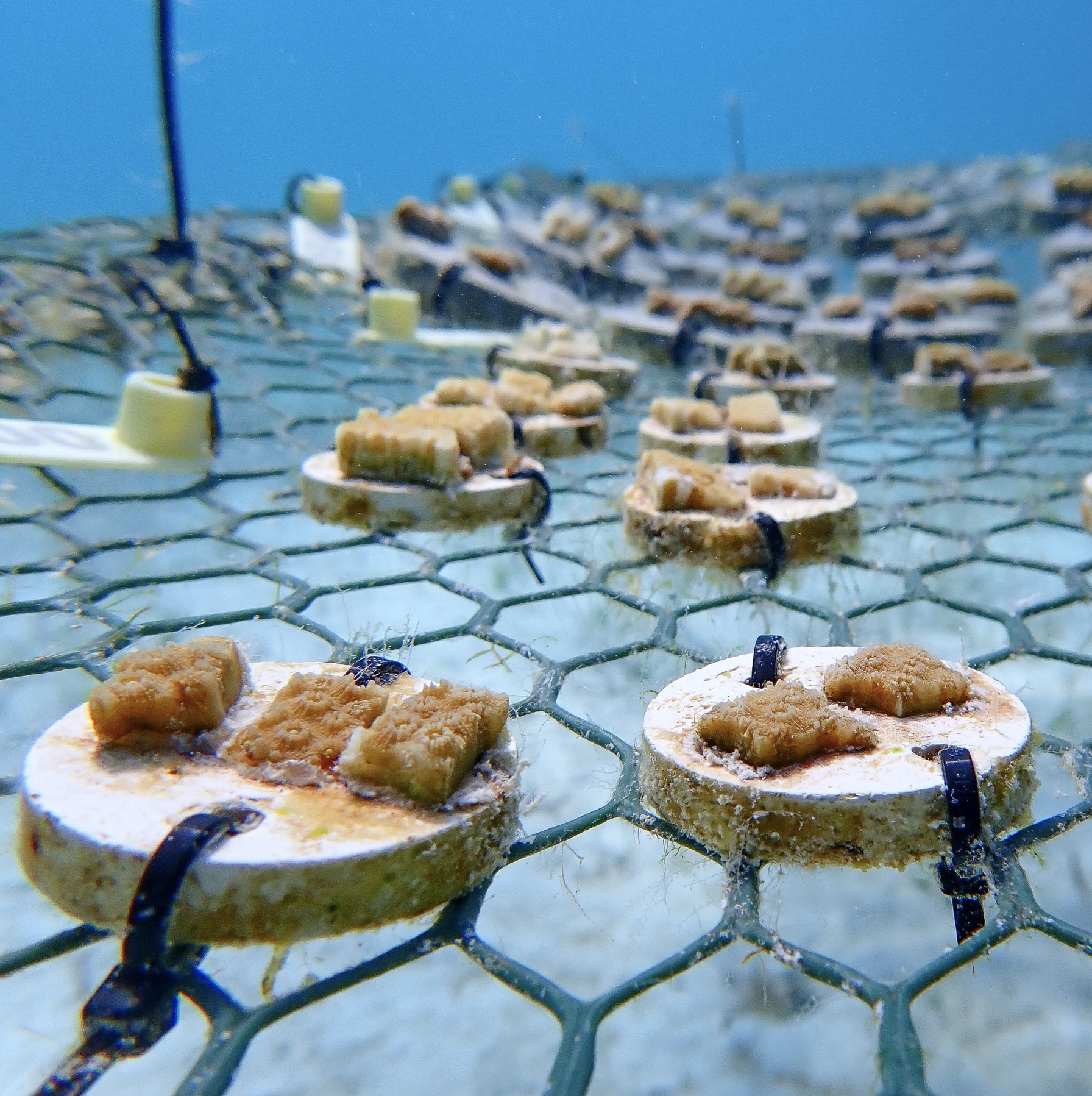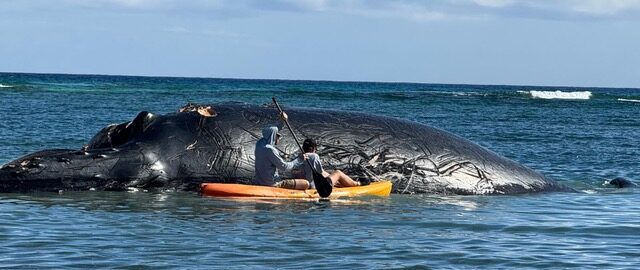Stories & Events
Check back for the latest news updates, stories, and events with our partners.
Featured Content
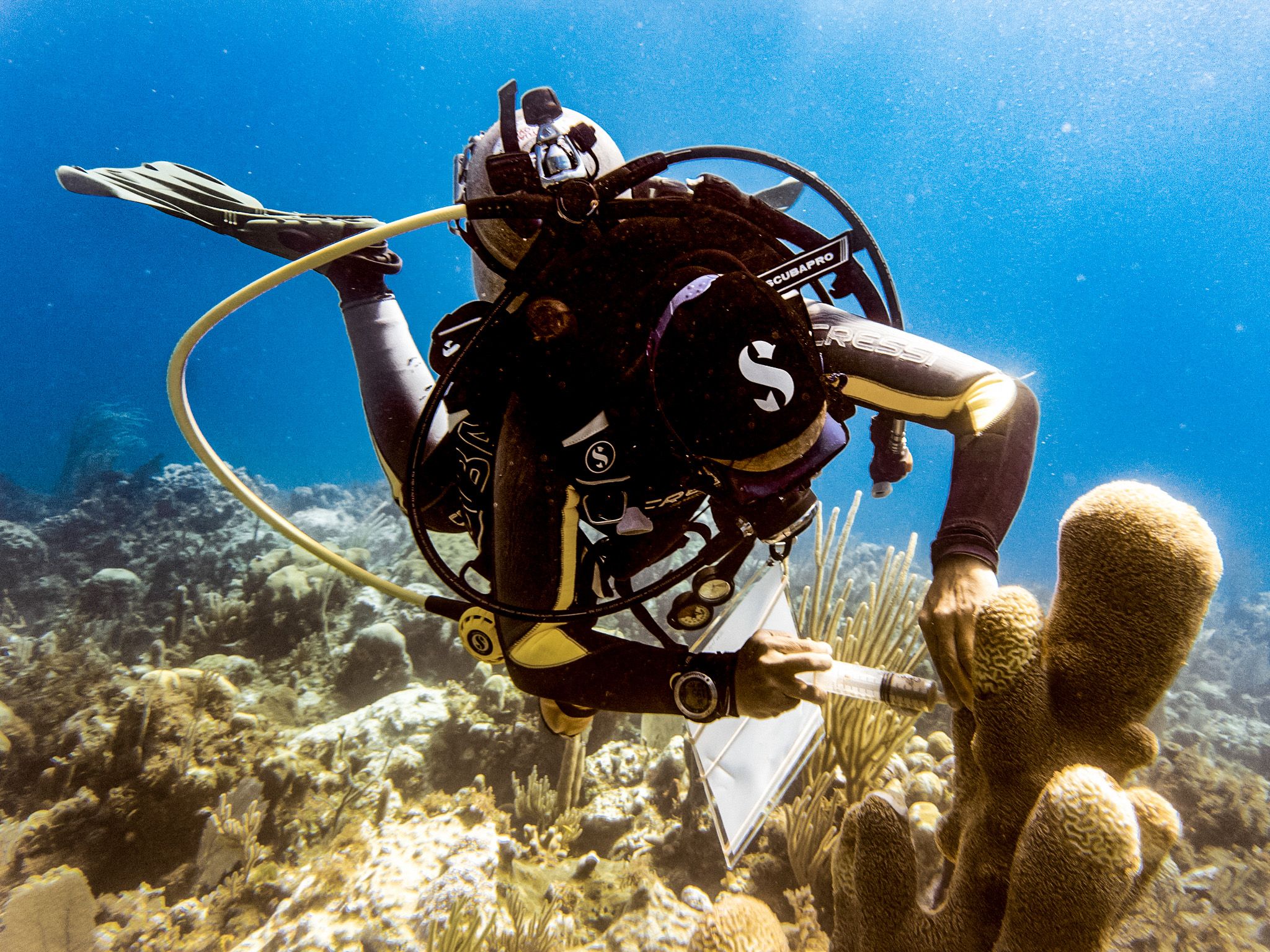
Stony Coral Tissue Loss Disease in The Bahamas: Island-by-island update
Written by Lily Haines, Communications Director at the Perry Institute for Marine Science Widely deemed the “deadliest immediate threat to Caribbean coral reefs,” Stony Coral Tissue Loss Disease (SCTLD) is sweeping through The Bahamas’ crystal-blue waters like a forest fire. Its latest victim? The Exuma Cays Land and Sea
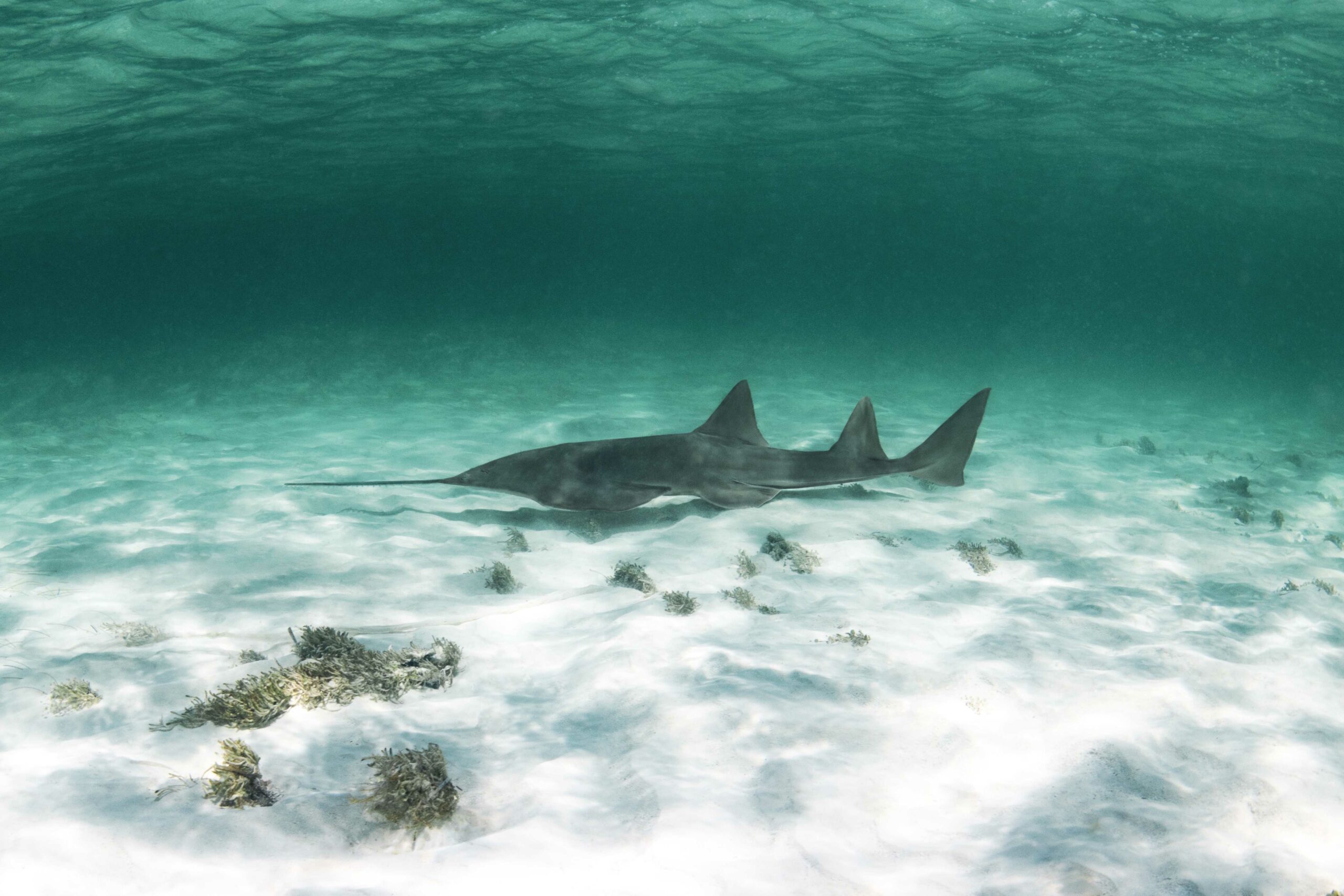
Sawfish off Andros Island
For the past three years, the team from the non-profit Saving the Blue has developed relationships with various community members in Andros, and so from October to December in 2021 they conducted interviews with fishing guides and other water users. Their aim was to describe sawfish distribution patterns in Andros, and identify key regions or habitats where sawfish monitoring would be effective, and potentially lead to protection.
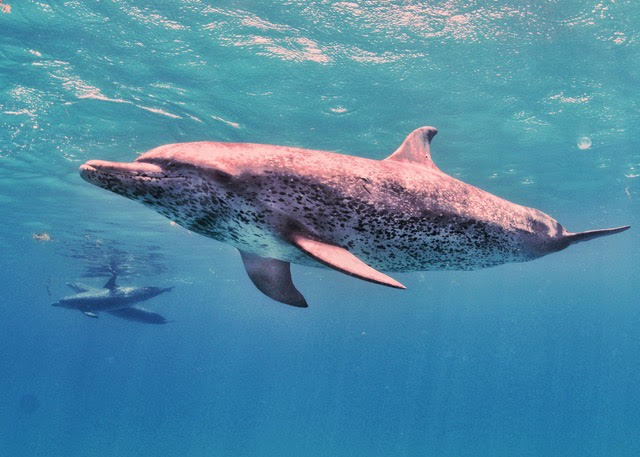
Modern Miracle “M&M” splashes offshore of Bimini
We’re thrilled to announce M&M is as strong as ever! Just last month, one of his former caregivers and Dolphin Cay veterinarian Dr. Amanda Pinder photographed and identified him off the coast of Bimini – the two even posed for a quick photo together. Coincidentally, M&M was the first wild dolphin Dr. Pinder had ever treated more than four years ago.
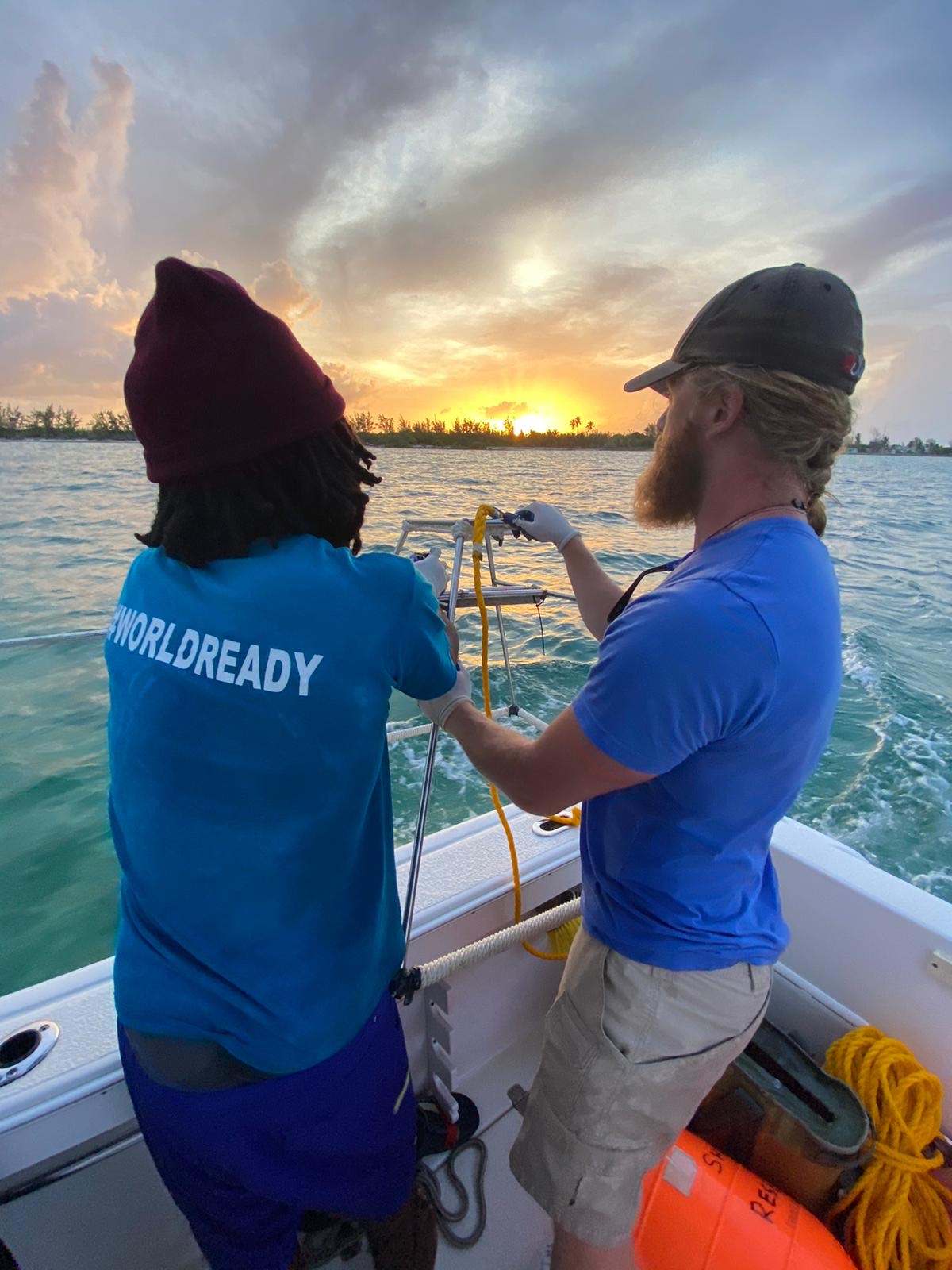
Shark research internship with Saving the Blue
Written by Tayshaun Burrows, BAMSI student My name is Tayshaun Burrows, I am a student at the Bahamas Agricultural and Marine Science Institute (BAMSI), working on my associate degree in marine science. Part of the requirements for this are to spend four weeks during the summer as an intern with

Stranding Response to Support Conservation of Marine Mammals in The Bahamas
Read the latest update from The Bahamas Marine Mammal Rescue Organization (BMMRO)!
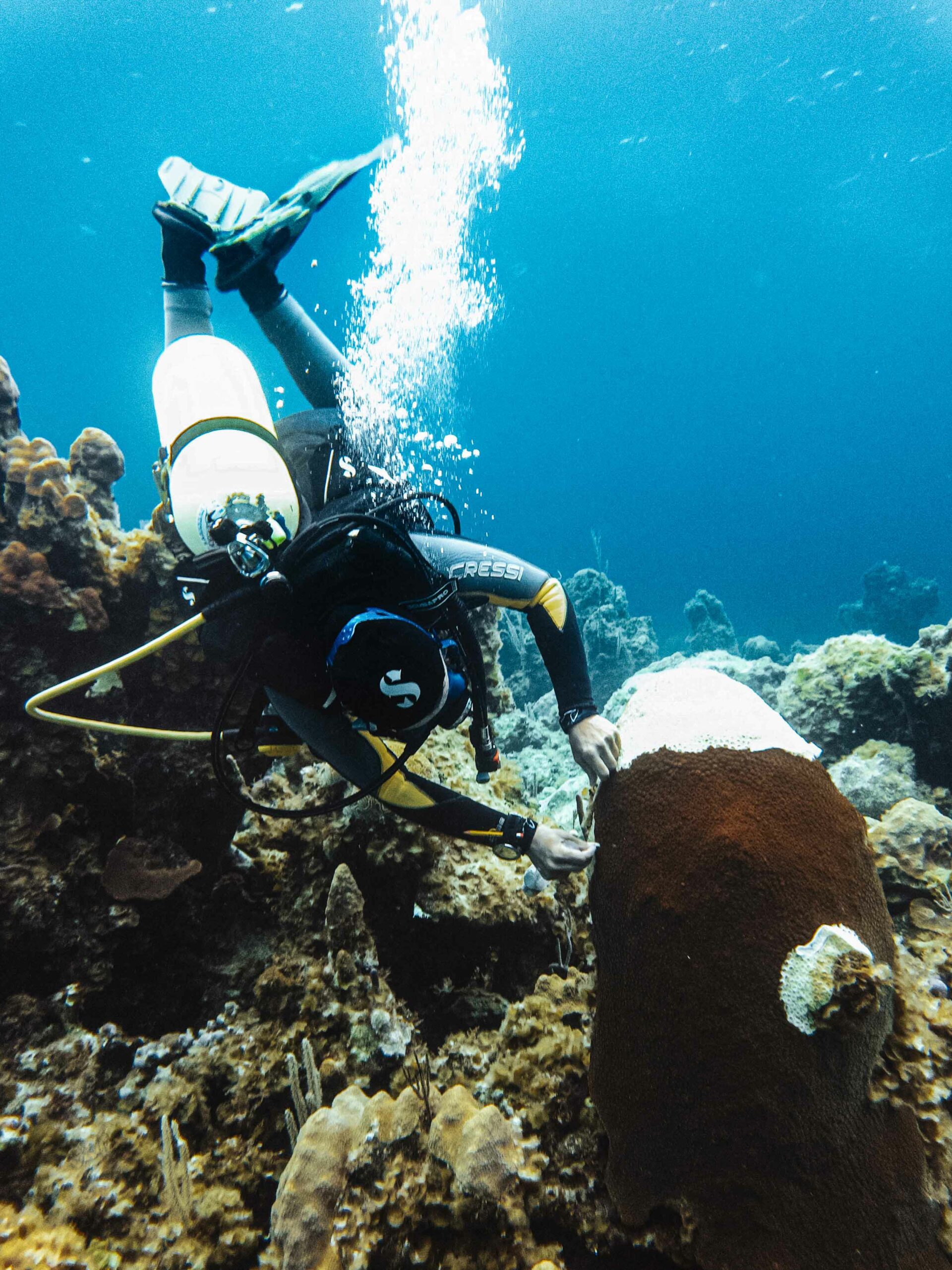
Take Action: Slow the spread of Stony Coral Tissue Loss Disease
Written by Lily Haines, Communications Director, Perry Institute for Marine Science In many parts of the Caribbean, diving underwater will transport you to a colorful world of fish, marine mammals, algae, crabs and more. This dazzling undersea rainforest is created by colonies of rock-like animals called corals. But just like
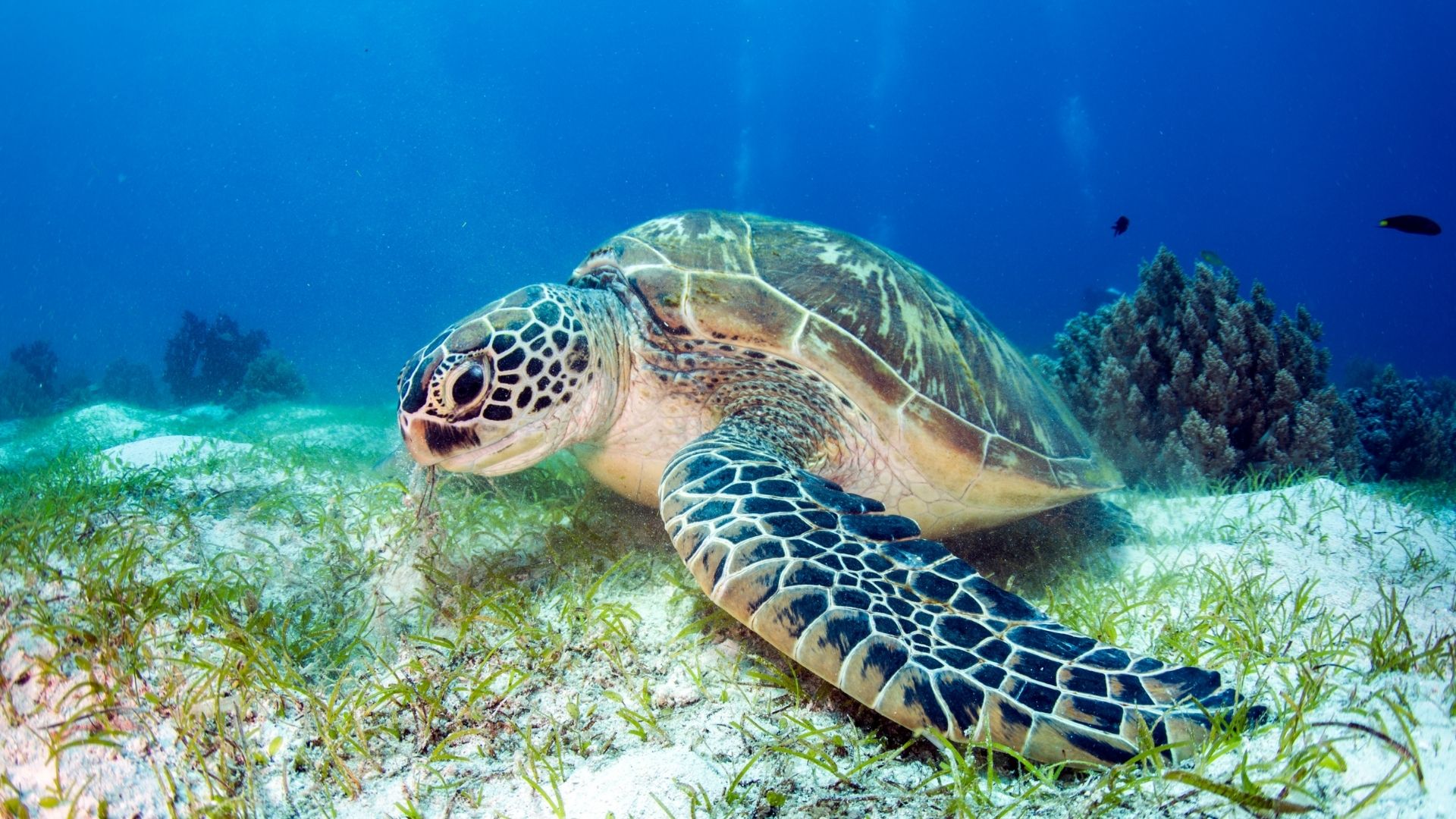
Sea Turtle Savvy – Everything You Need to Know About Green Sea Turtles in The Bahamas
Green sea turtles are the ocean’s lawnmowers and meticulous gardeners of seagrass meadows. Just as mowing your lawn keeps it in its best condition, the green turtle’s grazing keeps expansive seagrass ecosystems healthy since trimming stimulates new growth! Green sea turtles can live up to 80 years and are found in
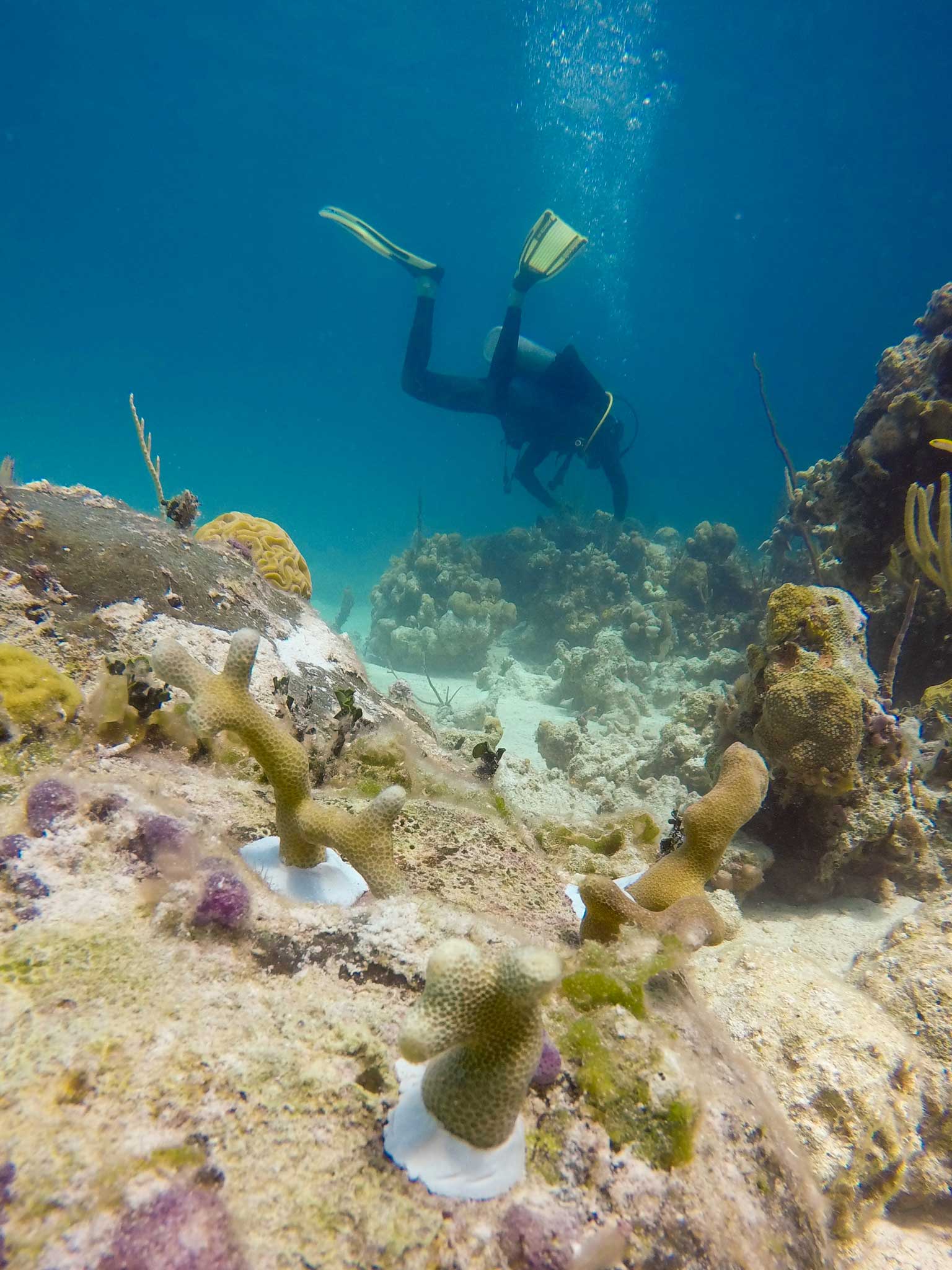
Coral Restoration at the Atlantis Blue Project Foundation
Home to a third of the Caribbean’s coral reefs, ocean biodiversity in The Bahamas is simply unmatched. The country is home to the world’s first land and sea park and the Atlantic Ocean’s first shark sanctuary! And it’s coral reefs are like underwater rainforests, sheltering thousands of marine species from
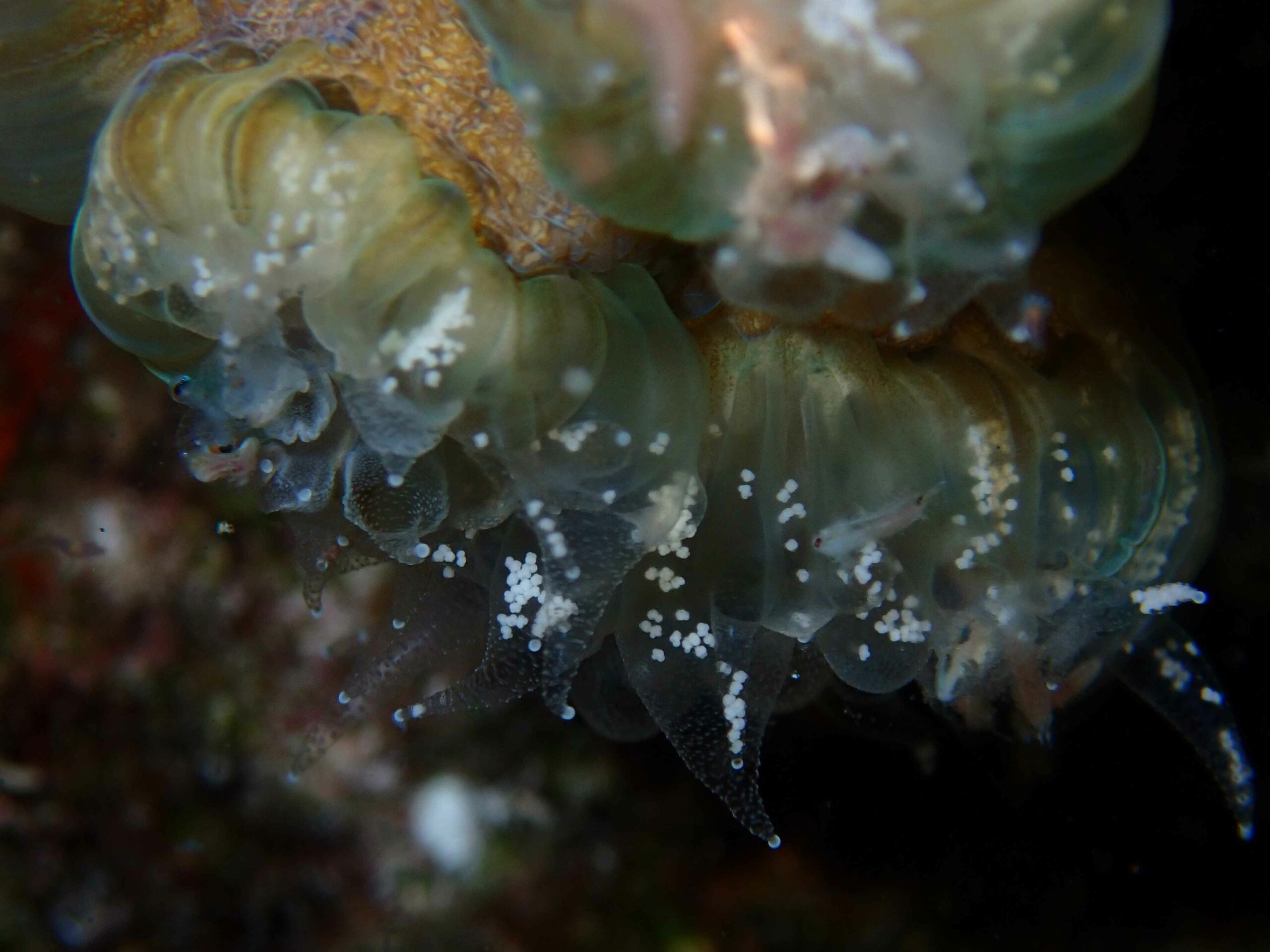
Love is in the water with coral spawning season upon us!
Every summer once the water temperature increases, several reef creatures know it is the time of the year to produce some offspring by releasing their reproductive cells or gametes (females called eggs and males called sperm) into the water column. Corals in particular are sessile animals that can’t move to find mates, so they synchronize their spawning cycles with different environmental cues like water temperature, sunset time and moon phases. Read on to learn more about this fascinating process!
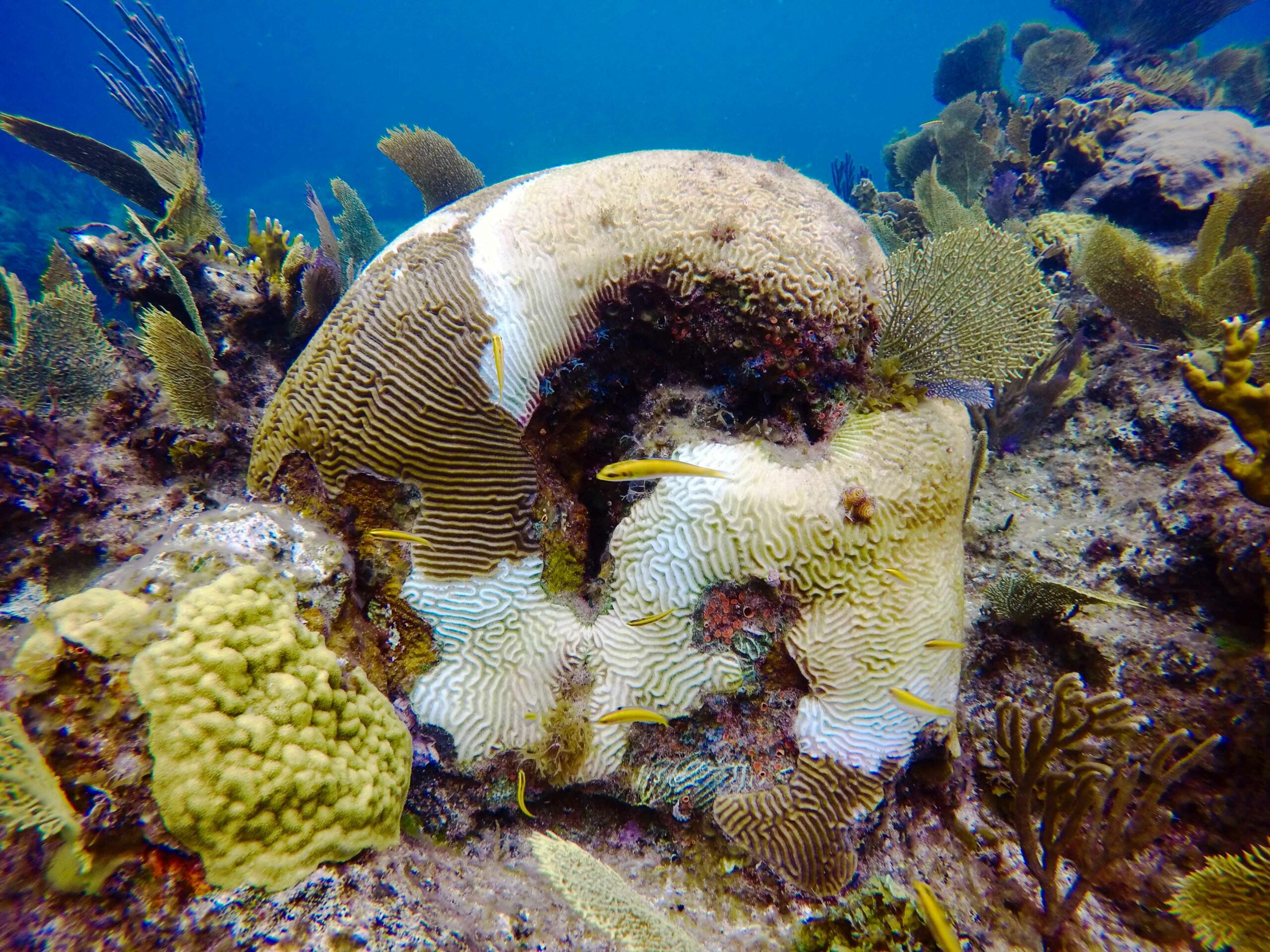
Take Action: How to identify Stony Coral Tissue Loss Disease
Written by Lily Haines, Communications Director, Perry Institute for Marine Science Stony Coral Tissue Loss Disease (SCTLD) is a highly contagious and lethal disease sweeping through the Caribbean, leaving thousands of dead corals and non-functioning reefs in its wake. The disease, which first surfaced off of Miami in 2014, has

Stony Coral Tissue Loss Disease in The Bahamas: Island-by-island update
Written by Lily Haines, Communications Director at the Perry Institute for Marine Science Widely deemed the “deadliest immediate threat to Caribbean coral reefs,” Stony Coral Tissue Loss Disease (SCTLD) is sweeping through The Bahamas’ crystal-blue waters like a forest fire. Its latest victim? The Exuma Cays Land and Sea

Sawfish off Andros Island
For the past three years, the team from the non-profit Saving the Blue has developed relationships with various community members in Andros, and so from October to December in 2021 they conducted interviews with fishing guides and other water users. Their aim was to describe sawfish distribution patterns in Andros, and identify key regions or habitats where sawfish monitoring would be effective, and potentially lead to protection.

Modern Miracle “M&M” splashes offshore of Bimini
We’re thrilled to announce M&M is as strong as ever! Just last month, one of his former caregivers and Dolphin Cay veterinarian Dr. Amanda Pinder photographed and identified him off the coast of Bimini – the two even posed for a quick photo together. Coincidentally, M&M was the first wild dolphin Dr. Pinder had ever treated more than four years ago.

Shark research internship with Saving the Blue
Written by Tayshaun Burrows, BAMSI student My name is Tayshaun Burrows, I am a student at the Bahamas Agricultural and Marine Science Institute (BAMSI), working on my associate degree in marine science. Part of the requirements for this are to spend four weeks during the summer as an intern with

Stranding Response to Support Conservation of Marine Mammals in The Bahamas
Read the latest update from The Bahamas Marine Mammal Rescue Organization (BMMRO)!

Take Action: Slow the spread of Stony Coral Tissue Loss Disease
Written by Lily Haines, Communications Director, Perry Institute for Marine Science In many parts of the Caribbean, diving underwater will transport you to a colorful world of fish, marine mammals, algae, crabs and more. This dazzling undersea rainforest is created by colonies of rock-like animals called corals. But just like

Sea Turtle Savvy – Everything You Need to Know About Green Sea Turtles in The Bahamas
Green sea turtles are the ocean’s lawnmowers and meticulous gardeners of seagrass meadows. Just as mowing your lawn keeps it in its best condition, the green turtle’s grazing keeps expansive seagrass ecosystems healthy since trimming stimulates new growth! Green sea turtles can live up to 80 years and are found in

Coral Restoration at the Atlantis Blue Project Foundation
Home to a third of the Caribbean’s coral reefs, ocean biodiversity in The Bahamas is simply unmatched. The country is home to the world’s first land and sea park and the Atlantic Ocean’s first shark sanctuary! And it’s coral reefs are like underwater rainforests, sheltering thousands of marine species from

Love is in the water with coral spawning season upon us!
Every summer once the water temperature increases, several reef creatures know it is the time of the year to produce some offspring by releasing their reproductive cells or gametes (females called eggs and males called sperm) into the water column. Corals in particular are sessile animals that can’t move to find mates, so they synchronize their spawning cycles with different environmental cues like water temperature, sunset time and moon phases. Read on to learn more about this fascinating process!

Take Action: How to identify Stony Coral Tissue Loss Disease
Written by Lily Haines, Communications Director, Perry Institute for Marine Science Stony Coral Tissue Loss Disease (SCTLD) is a highly contagious and lethal disease sweeping through the Caribbean, leaving thousands of dead corals and non-functioning reefs in its wake. The disease, which first surfaced off of Miami in 2014, has

